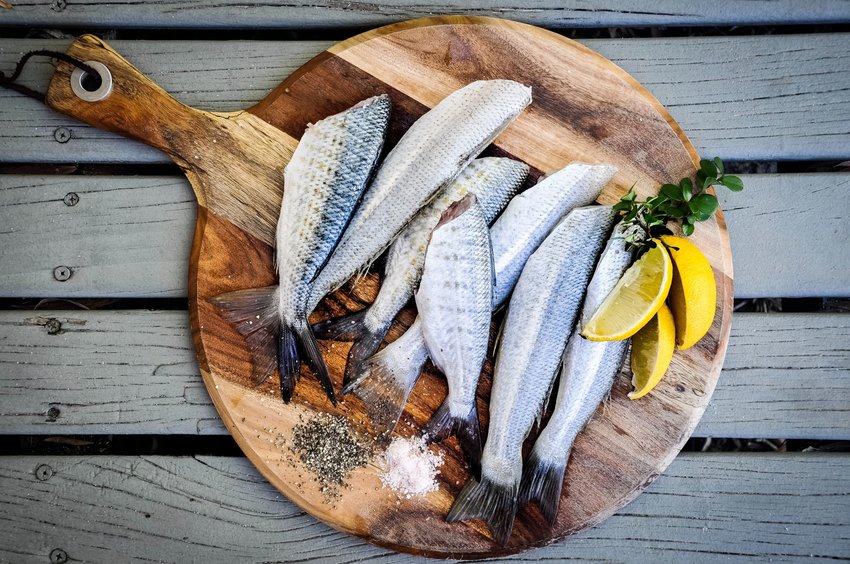Food trends are constantly changing. Want proof? A mere decade or so ago, if you asked for a cake pop or slider, you’d probably be met with blank stares. To help you stay ahead of the food trends, here’s a handy guide to what’s happening in the kitchen, including inspired eats from foreign destinations, new dietary preferences, and a throwback to some classic culinary techniques.
Pescatarian
Pescatarians are a branch of vegetarians who still consume fish and seafood. The term blends the Italian word for fish, pesce, with "vegetarian," for people who turn down all other types of meat, from beef to chicken to pork. The term was first created in the 1990s, but these days the "pesca" trend is going stronger than ever.
Cascara
If you’ve sipped on cascara, you know it’s the ultimate hybrid: part-tea, part-coffee. Also known as “coffee cherry tea,” cascara is made by brewing the dried skins of coffee fruit (AKA what’s left behind after the coffee beans are harvested). While it’s not as caffeinated as standard coffee, it’s gaining popularity as a cold-brew option.
Mezcal
Look out, tequila — you’ve got some competition. Mezcal is made from distilled agave and generally has a strong smoky flavor. Mezcalerias (tasting rooms for mezcal) are popping up all over Mexico, and liquor store shelves are increasingly making space for this spirit stateside, too.
Za’atar
Middle Eastern cuisine owes much of the rich flavor profiles to za’atar, a unique spice blend that includes oregano, thyme, marjoram, sumac, and ground sesame seeds. Outside of your favorite Middle Eastern restaurant, this spice blend can give a kick to soups, meat rubs, teas, and dressings. Give za’atar a try the next time you’re looking for something to dress up a boring chicken.
Pickling
Hear us out: Pickling has been around for millennia but has enjoyed a recent resurgence, thanks to its alignment with sustainability and gut-healthy eating practices. From rapid-fire quick pickled onions as part of your BBQ spread, to classic bread and butter pickles, to the bubbling world of kombucha, this old-school fermentation technique is totally trending again.
Tahini
Now that Western kitchens are adopting this Middle Eastern cuisine staple, don’t be surprised to see it show up in unexpected places. Chefs are starting to use tahini in sweet dishes as an easy (and allergy-friendly) sub for peanut butter.
Grazing
Buffets are so 1990s — grazing tables are where it’s at now, particularly for social functions. Instead of loading up a plate, a visit to the grazing table is meant to encourage nibbling all night long. Think platters piled high with deli meats, cheese, veggies, fruits, breads, hot appetizers, olives, nuts, and sweet treats.
Yerba Mate
Move over, matcha! Yerba mate is a highly caffeinated tea that hails from South America and is starting to gain a huge following up north. It’ll put an all-natural pep in your step that might lead to you replacing your morning cup of joe.
Sorrel
We all know greens are good for us, but there’s only so much kale a person can take. Sorrel has a lemony flavor when cooked, and is found on the plates of diners from Eastern Europe and Africa to the Middle East and the Caribbean, and now North America.
Peganism
Pegan refers to a cross between paleo and vegan diets, meaning no animal products and no grains. It may sound a little spartan, but practitioners swear by its health benefits.
Yuca
As the demand for veggie dishes rises, so does our interest in trying out new foods. Yuca, a hearty root vegetable, is becoming ubiquitous enough to start popping up even on fast-food menus — in fried form, of course.
Sous Vide
This method of cooking is gaining popularity as a foolproof way to get perfectly pink steaks, healthy steamed veggies, and flawlessly cooked fish every single time. Food is sealed in a plastic pouch with spices or marinades, and then submerged in a water bath held at a precise temperature. The result is food that’s juicy and bursting with flavor — with minimal effort.
Chayote
Another south-of-the-border find is chayote (pronounced chai-OH-dee), or Mexican pear squash. With a bright green color and curvy shape, it’s like the veggie superfood cousin to pears. The semi-sweet cucumber-adjacent flavor can be enjoyed raw or cooked. Pinterest, the arbiter of all things trendy, saw a 76% surge in searches for chayote recipes in 2019.

